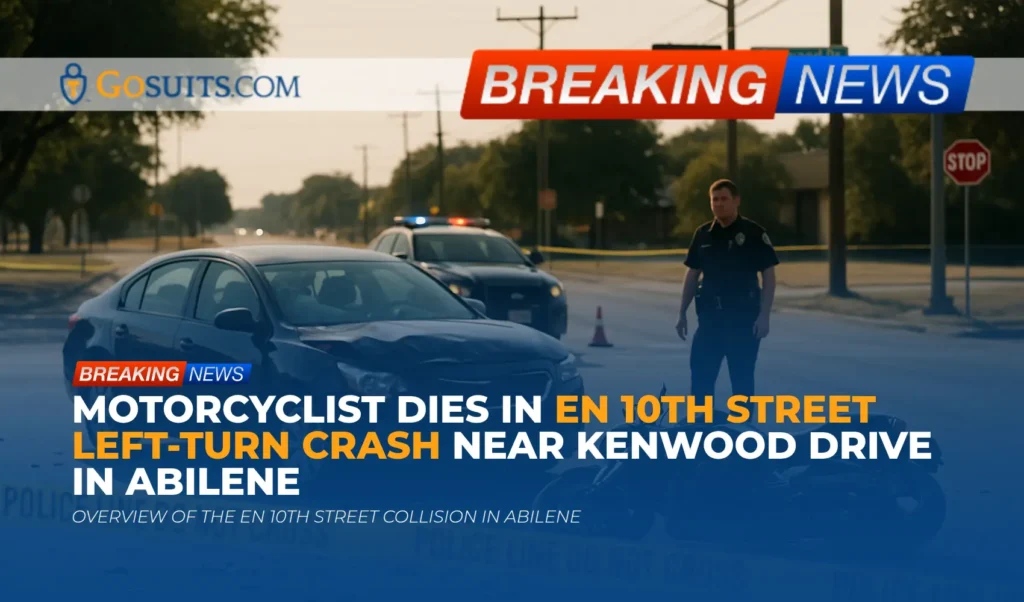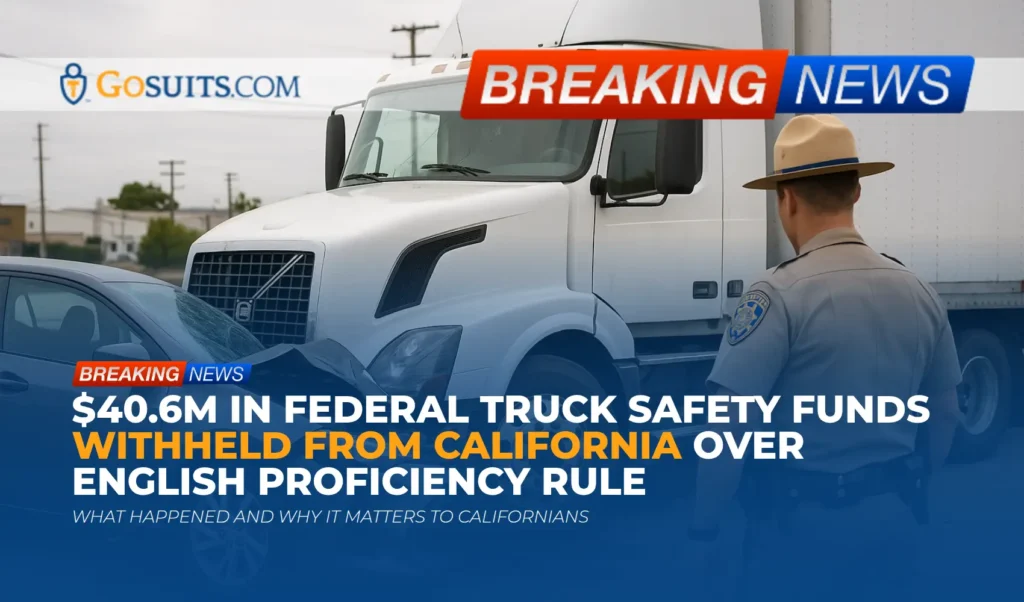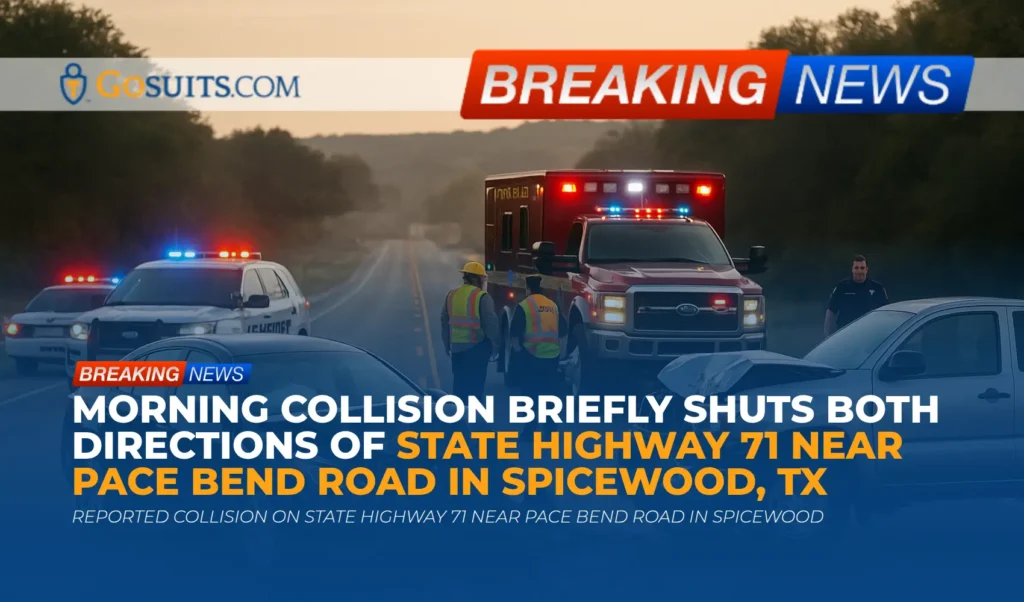- Overview of the reported crash in Sonoma County
- What is publicly known so far
- Why road debris is so dangerous for motorcyclists
- Possible civil liability in debris-avoidance collisions
- Evidence that often matters in a wrongful death investigation
- Where families can request official records and documents
- Insurance considerations after a fatal motorcycle crash
- Key California timelines and statutes that may apply
- Community safety and prevention around unsecured loads
- Commentary from Gosuits Rohnert Park, California Personal Injury Attorney
- Why taking informed action matters now
- Sources
Overview of the reported crash in Sonoma County
Local reporting indicates that on or about October 15, 2025, a 40-year-old motorcyclist, a well-known Santa Rosa tattoo artist and business owner, lost his life in a collision on Highway 101 in Rohnert Park. Reports describe a circumstance in which a car swerved to avoid a bag of debris on the highway, after which the motorcyclist’s 1974 Harley-Davidson and the car collided. Community members have since gathered to memorialize the rider’s life and contributions to the area.
High-speed corridors like Highway 101, especially through Sonoma County cities such as Rohnert Park and Santa Rosa, see substantial traffic volume, frequent lane changes, and the occasional presence of debris on the roadway. When debris appears unexpectedly, drivers and riders alike may have only a split second to react. For motorcyclists, even minor evasive maneuvers can be unforgiving at highway speed, and secondary collisions triggered by another vehicle’s sudden movement often leave little room to recover.
Our hearts go out to the family, friends, colleagues, and community touched by this loss. The information below is intended to help community members understand the kinds of questions that arise after a tragedy like this and where to find assistance, records, and support.
What is publicly known so far
Reported facts from local coverage
- Date: Reports place the crash on or about October 15, 2025.
- Location: Highway 101 in Rohnert Park, Sonoma County, California.
- Vehicles involved: A 1974 Harley-Davidson motorcycle and a car that reportedly swerved to avoid a bag of debris.
- Result: The motorcyclist died from injuries sustained in the collision.
- Community impact: The rider owned a downtown Santa Rosa tattoo shop. Friends and family have organized memorials and a ride in his honor.
As investigations proceed, additional information can emerge regarding debris origin, lane positions, speed, witness accounts, and any video or telematics evidence.
Why road debris is so dangerous for motorcyclists
Debris on a freeway presents immediate hazards. For drivers of passenger vehicles, a quick swerve may seem like the safest option, but abrupt lane changes can create serious risks for adjacent or trailing road users, especially motorcyclists. Riders have a smaller profile, less physical protection, and are greatly affected by turbulence, lane intrusions, and sudden braking ahead. Even a small deviation by a nearby vehicle can create an unrecoverable situation for a rider at highway speed.
Federal and California safety agencies consistently note the elevated risk borne by motorcyclists in traffic crashes. The National Highway Traffic Safety Administration highlights that motorcyclists are significantly overrepresented in fatal crashes, in part because they lack the protective structure of a vehicle and are highly vulnerable to roadway hazards. See NHTSA’s motorcycle safety pages for national risk context and safety guidance.
In California, public agencies encourage reporting of hazardous debris and emphasize proper load securement to prevent objects from falling onto the roadway. Caltrans manages roadway maintenance and debris clearance on state highways, and the California Highway Patrol responds to incidents and coordinates traffic control and investigations.
Possible civil liability in debris-avoidance collisions
Determining civil liability after a debris-related crash is fact specific. Multiple parties can be implicated depending on what an investigation shows. Common civil theories include negligence by a driver, negligence by a party who allowed debris to enter the roadway, and claims related to dangerous conditions if public property was involved. Below are general pathways that attorneys often examine. This is educational information only, not a statement about any party in this incident.
1. The driver who swerved or changed lanes
California drivers must make lane changes or turns only when it can be done with reasonable safety. If a driver, while attempting to avoid debris, enters another lane unsafely or cuts off a motorcyclist, that movement can form the basis of a negligence claim. Investigations look at signaling, mirror checks, blind-spot clearance, speed for conditions, following distance, and whether there were safer alternatives such as controlled braking.
2. The unknown party who dropped or created the debris
If a third party failed to properly secure a load and debris fell into travel lanes, that party can bear civil responsibility. California law requires loads to be secured to prevent spillage and hazards on the roadway. When such a person or company can be identified, liability may extend to the individuals and the business entity whose load contributed to the hazard. Proving this often requires witness statements, dashcam video, or traffic camera footage that ties a specific vehicle to the debris.
3. Public entity liability for dangerous conditions
Public entities can be liable for a dangerous condition of public property if certain legal elements are met, including proof that the entity had actual or constructive notice and a reasonable time to correct the condition. These claims are fact intensive and turn on maintenance practices, response times, and whether the condition created a foreseeable risk of injury. Claims against public entities are subject to special procedures and short deadlines under the California Government Claims Act.
4. Comparative fault and multiple causes
California uses comparative fault, which means responsibility can be apportioned among multiple parties. A crash sequence may involve the presence of debris, evasive maneuvers by one vehicle, and the limited escape options for a motorcyclist. Liability can be shared depending on what investigators and, if necessary, a jury find about each actor’s conduct.
Evidence that often matters in a wrongful death investigation
Families seeking clarity often find that timely evidence preservation is crucial. When debris and sudden evasive movements are involved, these items can be especially important:
- Witness statements: Names, contact information, and immediate recollections from drivers and bystanders. Small details about lane positions, signals, or where debris first appeared can be decisive.
- Traffic or dashcam video: Vehicle dashcams from surrounding traffic can show lane changes, signaling, and the origin of debris. Some businesses facing the highway may have exterior cameras with limited retention windows.
- Event data recorders (EDRs): Modern cars often record pre-crash data such as speed and throttle. Prompt preservation can be essential.
- 911 and dispatch recordings: These can capture contemporaneous reports of debris in the roadway and the timing of responses.
- Debris documentation: Photos, measurements, or agency notes about the debris location, size, and type may point to a specific kind of load or vehicle.
- Scene measurements and diagrams: Law enforcement collision diagrams, measurements, and post-crash vehicle rest positions help reconstruct the sequence.
- Autopsy and medical records: Coroner findings and medical documentation help tie mechanism of injury to the crash dynamics.
Insurance carriers will begin their own investigations quickly. Before speaking with any insurance company, consider consulting an attorney so that rights are preserved and statements do not get misconstrued. What is said to an insurer can be used later in ways that may affect a claim.
Where families can request official records and documents
After a fatal crash, several agencies hold records that can help establish what happened. Many of these records are available to next-of-kin or authorized representatives by request.
California Highway Patrol collision report
The CHP typically investigates crashes on state highways such as Highway 101. Eligible requesters can ask for the collision report using CHP form 190 and submit it to the local Area office that handled the investigation. The CHP provides instructions and the request portal on its official site.
Learn more: CHP Collision Report Request

Autopsy and coroner records
In Sonoma County, the Sheriff’s Office serves as the coroner. Next-of-kin can typically request the autopsy report, coroner’s investigative report, and related records after the examination is complete and reports are finalized. Processing times can vary. The primary county portal is maintained by Sonoma County government.
Learn more: Sonoma County Government (navigate to Sheriff-Coroner services)
Death certificates
Certified copies of death certificates in California are issued through county vital records or the California Department of Public Health. Processing times and eligibility requirements are posted by CDPH.
Learn more: California Department of Public Health – Vital Records
911 audio and dispatch logs
911 recordings and computer-aided dispatch logs may be available through the relevant public safety agency, subject to statutory exemptions and retention periods. Requests often proceed under California’s Public Records Act to the county or city dispatch center or the CHP for highway incidents.
Caltrans maintenance and hazard records
Caltrans may maintain records about debris calls, maintenance responses, and hazard clearance on state highways. In some cases, maintenance logs or service requests help show when a hazard was reported and when crews responded.
Learn more: Caltrans
Government Claims Program for state entities
When a claim is alleged against a state agency such as Caltrans, California’s Government Claims Program generally requires a written claim within a short statutory period before any lawsuit can proceed. The Department of General Services provides instructions and forms.
Learn more: California Department of General Services – Government Claims Program
Quick reference table: key records and where to ask
|
Record type |
Agency |
How to request |
Official resource |
|
Collision report |
California Highway Patrol (local Area office) |
Submit CHP 190 with required details and proof of eligibility |
|
|
Autopsy/coroner report |
Sonoma County Sheriff-Coroner |
Next-of-kin request after completion of examination |
|
|
Death certificate |
CDPH or Sonoma County Vital Records |
Order certified copies per CDPH eligibility rules |
|
|
911 audio/dispatch logs |
CHP and/or county dispatch center |
Public records request, subject to retention and exemptions |
|
|
Maintenance/hazard logs |
Caltrans |
Public records request for maintenance and incident response logs |
|
|
Claims against state entities |
Department of General Services |
Government Claims Program submission before suit |
Insurance considerations after a fatal motorcycle crash
Insurance issues after a debris-involved highway collision can be complex. Families often face several overlapping policies and potential claim types at once. Before contacting any insurer, it is prudent to speak with an attorney so that communications are coordinated and rights are protected. Statements provided to an insurance company can be used later during claim evaluation or litigation.
Potential claim avenues
- Negligent driver liability: If the car’s evasive movement was unsafe for the conditions, the vehicle’s liability policy may be implicated for wrongful death damages under California law.
- Unidentified third party who dropped debris: If a specific vehicle is identified as the source of the debris due to an unsecured load, that party’s liability coverage may be pursued. Identification often relies on witnesses or video evidence.
- Uninsured and underinsured motorist coverage (UM/UIM): Depending on policy language, UM/UIM may sometimes apply when responsible parties are unidentified or have insufficient coverage. These claims are highly technical in California and vary by policy. Policy conditions such as physical-contact requirements may apply. An attorney can evaluate options before an insured gives any recorded statement.
- MedPay and funeral benefits: Some policies include limited medical payments or funeral expense coverage that may help with immediate costs, typically without regard to fault.
- Public entity claims: If a claim involves a dangerous condition of public property, special procedures apply and short deadlines must be met.
Insurance companies employ adjusters and defense teams who regularly handle serious loss claims. It can be beneficial to have a skilled advocate help navigate policy terms, exclusions, subrogation issues, and the proper valuation of a wrongful death claim under California law.
Key California timelines and statutes that may apply
California imposes strict filing deadlines. Missing one can impact the ability to pursue a civil claim.
- Wrongful death statute of limitations: Generally two years from the date of death under Code of Civil Procedure section 335.1. See the California Legislative Information site for statutory text.
- Survival actions: Certain claims that belonged to the decedent before death can continue through the estate under Code of Civil Procedure section 377.30 and related provisions.
- Claims against public entities: Written claims often must be filed within six months under the Government Claims Act before a lawsuit can be brought. See Government Code sections 911.2 and 945.4.
- Dangerous condition claims: Substantive liability for a dangerous condition of public property is addressed in Government Code section 835.
Statutes can change and exceptions or tolling rules may apply in certain circumstances. Because timing is critical, consulting counsel early helps preserve options. Official statutory text and state claims procedures are available on government websites:
Community safety and prevention around unsecured loads
Debris on highways often traces back to unsecured loads or items falling from vehicles. California agencies emphasize load securement, proper tie-downs, and regular checks during transport. Failing to secure a load can lead to roadway hazards and civil liability when injuries result. Public education campaigns urge drivers to slow down safely and avoid sudden movements that could endanger nearby road users.
For freeways such as Highway 101, Caltrans responds to reports of debris and hazards. Community members who observe debris can report the hazard as safely as possible. Law enforcement and maintenance teams coordinate to mitigate risk and clear the roadway.
NHTSA and California’s Office of Traffic Safety publish safety recommendations for both drivers and riders, including maintaining safe following distances, scanning the road far ahead, and preparing for the possibility that another vehicle may react suddenly. While safe riding and driving cannot remove all risks, these practices can reduce the chances of a cascading crash when unexpected hazards appear.
Learn more:

Commentary from Gosuits Rohnert Park, California Personal Injury Attorney
We extend our deepest sympathies to the family, friends, and community members mourning this loss. This discussion is offered for educational purposes and general information in the wake of a difficult event. Every collision is unique, and thoughtful, case-specific guidance is important before any decisions are made.
Debris-triggered crashes often unfold in a matter of seconds. A driver’s instinct to swerve can unintentionally imperil those around them, especially motorcyclists who have little margin for error. From a civil-injury perspective, careful analysis typically focuses on whether an evasive maneuver was reasonable under the circumstances, whether other safer options existed, and whether an earlier actor, such as the party responsible for the debris, set the harmful chain of events in motion. When public property is involved, there are additional layers to examine, including maintenance response times and notice of the hazard.
Insurance companies and large corporate defendants understand how to frame these incidents quickly in ways that limit their exposure. Adjusters may emphasize uncertainty about debris origin, dispute lane positions, or suggest that split-second reactions were unavoidable. Statements made early in the process can be used to narrow or devalue claims. Without guidance, families can feel outmatched by technical policy terms and procedural hurdles. That is why a free consultation can be so important: it offers a chance to learn about rights, timelines, and evidence preservation before engaging with insurers. It is also an opportunity to understand how multiple parties and coverages may interrelate so that nothing is overlooked.
Why taking informed action matters now
- Secure time-sensitive evidence: Surveillance video, dashcam footage, and 911 recordings are often overwritten within days or weeks. Acting promptly increases the chance that key footage and logs are preserved.
- Request essential records: Collision reports, autopsy findings, and dispatch logs help establish facts. Some agencies require formal processes and identification to release records, and processing can take time.
- Protect legal timelines: California’s wrongful death statute generally runs two years from the date of death, but claims against public entities may require a claim within six months. Early planning helps avoid missing deadlines.
- Coordinate insurance communications: Before giving statements to any insurer, understand policy terms and potential pitfalls. What someone says to an insurance company can be used later in claim evaluation.
- Clarify all potential responsible parties: Debris events can involve a negligent driver, an unidentified hauler with an unsecured load, and in some cases a public entity. Thoroughly mapping these possibilities early helps ensure complete claims.
- Address immediate practical needs: Benefits such as MedPay or limited funeral coverage may be available under certain policies. Understanding eligibility and documentation requirements prevents delays.
- Consider professional guidance: A free consultation with a seasoned personal injury attorney can help chart next steps, prioritize evidence, and explain options in plain language without obligations.
Taking these steps sooner rather than later can prevent the loss of crucial evidence, avoid missed deadlines, and set a clear path to obtaining needed records and information.
Sources
- California Highway Patrol – Collision Report Request (CHP 190)
- California Highway Patrol
- Caltrans – California Department of Transportation
- California Department of General Services – Government Claims Program
- California Legislative Information – Code of Civil Procedure and Government Code
- California Department of Public Health – Vital Records
- Sonoma County Government
- National Highway Traffic Safety Administration – Motorcycles
- California Office of Traffic Safety






